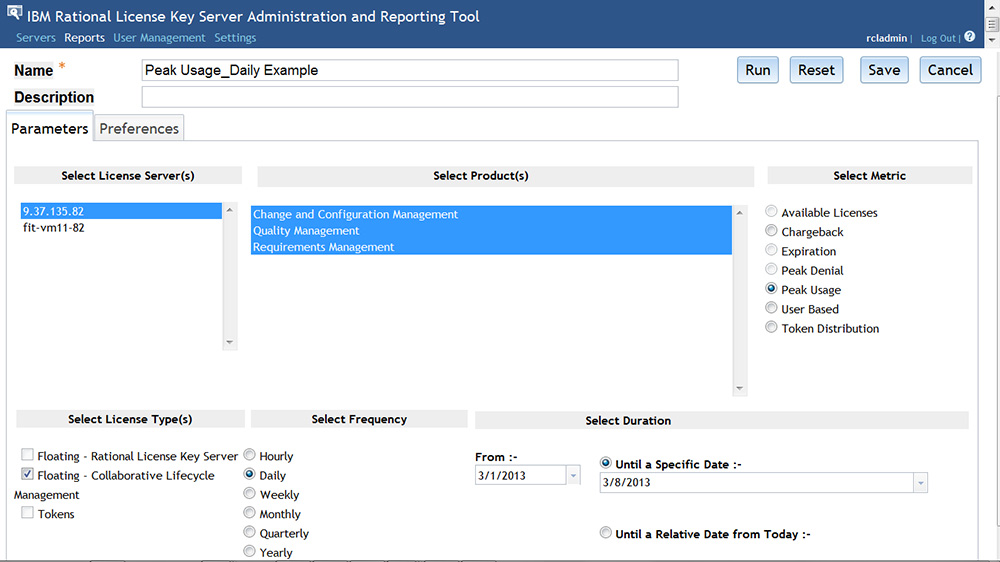
In other cases, IBM chooses to maintain some of the license metrics of the acquired company (Maximo and Cognos are examples). In some cases, IBM changes the licensing rules of the acquired company to align with the existing IBM rules. An overview of the most common IBM products within each brand can be found here. IBM frequently expands its portfolio through product development and acquisitions of software companies. Commonly used products are WebSphere Application Server and WebSphere MQ (middleware). WebSphere: Product families within this brand are application servers, business integration, commerce, development tools, and portals.Rational itself was acquired by IBM in 2003 and expanded through the acquisition of Telelogic in 2008.
 Rational: This brand groups most IBM software relating to software development and delivery. Recent acquisitions which were added to this brand are Candle (2004), Micromuse (2006), and MRO (2006). Tivoli Systems was acquired by IBM in 1997. Examples of commonly used products are Tivoli Storage Manager (for data backup and restore) and Tivoli Monitoring (for monitoring performance and availability of servers and applications). Tivoli: The products in this brand focus on infrastructure management. Lotus Software was acquired by IBM in 1995. Lotus: Besides the well-known Lotus Notes/Domino email software, this brand covers products which are aimed at providing a unified environment for messaging, calendaring, application development, real-time and team collaboration, content management, mobile and wireless devices, and social networking. Acquisitions which have been added to this brand include Informix (2001), Ascential (2005), FileNet (2006), and Cognos (2008). Other products in this brand focus on areas such as data warehousing, data analysis, data mining, media asset management, enterprise content management and information integration. DB2 and Information Management: This brand is mostly known for its DB2 database products such as DB2 Enterprise Edition. IBM groups its software offerings in five general “brands”: This guide aims at providing a quick overview of licensing topics which apply to most IBM software products.
Rational: This brand groups most IBM software relating to software development and delivery. Recent acquisitions which were added to this brand are Candle (2004), Micromuse (2006), and MRO (2006). Tivoli Systems was acquired by IBM in 1997. Examples of commonly used products are Tivoli Storage Manager (for data backup and restore) and Tivoli Monitoring (for monitoring performance and availability of servers and applications). Tivoli: The products in this brand focus on infrastructure management. Lotus Software was acquired by IBM in 1995. Lotus: Besides the well-known Lotus Notes/Domino email software, this brand covers products which are aimed at providing a unified environment for messaging, calendaring, application development, real-time and team collaboration, content management, mobile and wireless devices, and social networking. Acquisitions which have been added to this brand include Informix (2001), Ascential (2005), FileNet (2006), and Cognos (2008). Other products in this brand focus on areas such as data warehousing, data analysis, data mining, media asset management, enterprise content management and information integration. DB2 and Information Management: This brand is mostly known for its DB2 database products such as DB2 Enterprise Edition. IBM groups its software offerings in five general “brands”: This guide aims at providing a quick overview of licensing topics which apply to most IBM software products. 
One reason for this is that IBM has a broad portfolio of software which is continually expanding, and each product has different licensing rules and methods of measuring deployment. However, IBM licensing rules and policies are not as well-known as that of some other software vendors. IBM is one of the largest software vendors in the world – some rankings even list it as the largest software vendor.

IBM Blue Gene-P This Quick Guide is available in PDF format – Simply subscribe to our free newsletter to receive a free copy instantly.







 0 kommentar(er)
0 kommentar(er)
